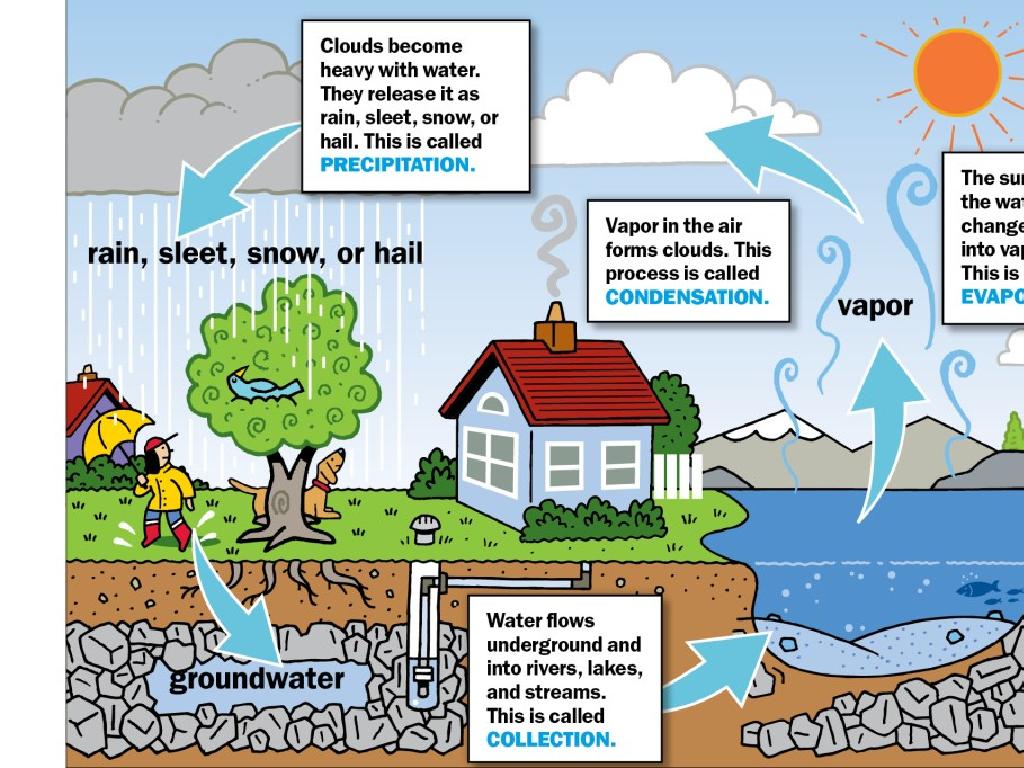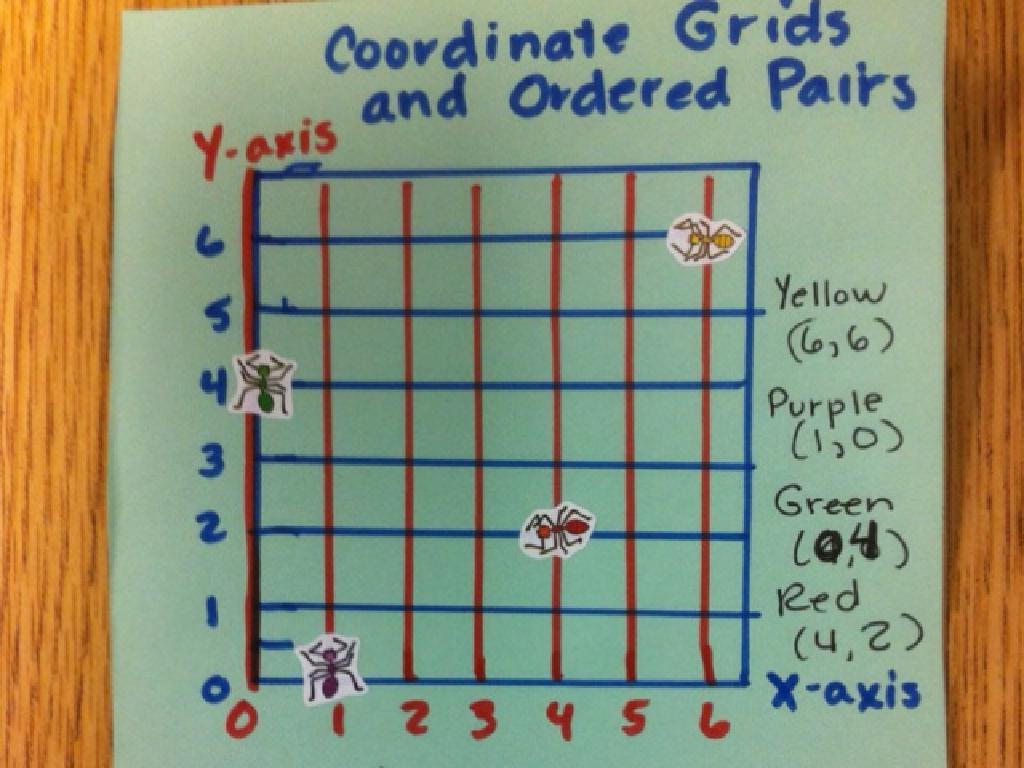The Civil War: War Tactics And The Home Front
Subject: Social studies
Grade: Fourth grade
Topic: The Civil War And Reconstruction
Please LOG IN to download the presentation. Access is available to registered users only.
View More Content
Exploring The Civil War: Tactics and Home Front
– The Civil War’s impact on history
– A pivotal event that shaped the United States.
– War tactics used by both sides
– Strategies like the use of ironclads and railroads.
– Life on the home front during the war
– How families contributed to the war effort from home.
– Importance of learning this history
– Understanding the Civil War helps us learn about our nation’s challenges and growth.
|
This slide introduces students to The Civil War, emphasizing its significance in American history. Discuss the innovative tactics used, such as ironclad ships and the strategic use of railroads, which were critical to the movement of troops and supplies. Highlight the role of families and communities on the home front, who supported the war effort through various means, including managing farms and making supplies. Emphasize that learning about the Civil War is crucial for understanding the challenges the country faced and how it has evolved. Encourage students to think about how people’s lives were affected by the war and to consider the lasting impact of the conflict on the nation.
Understanding The Civil War
– The Civil War: A major conflict
– A battle between Northern and Southern states
– Union vs. Confederacy
– The North (Union) fought the South (Confederacy)
– Causes: Slavery and states’ rights
– Disagreements over slavery and how much power states should have
– The Civil War’s impact
– It was the deadliest U.S. war, changing the nation forever
|
This slide introduces the Civil War to fourth graders, explaining it as a significant event in American history. It was a conflict between the Northern states, known as the Union, and the Southern states, called the Confederacy, from 1861 to 1865. The war was primarily fought over the issues of slavery and states’ rights. Emphasize the scale of the war, being the deadliest in American history, and its lasting effects on the nation. Use this opportunity to set the stage for discussing the importance of unity and the value of human rights. Encourage students to reflect on how the past has shaped our present society.
War Tactics: Then and Now
– Civil War battle strategies
– Soldiers formed lines for battle and used muskets.
– Comparing past and present tactics
– Today’s warfare uses advanced technology like drones.
– Infantry, cavalry, and artillery roles
– Infantry marched in lines, cavalry rode horses, artillery used cannons.
– Examples of Civil War tactics
|
This slide aims to give students a basic understanding of how soldiers fought during the Civil War compared to modern warfare. Emphasize the use of infantry lines, where soldiers stood shoulder to shoulder, the cavalry which involved soldiers on horseback, and the use of artillery like cannons. Contrast these with modern tactics that involve long-range and automated weapons, emphasizing how technology has changed warfare. Use examples like the Battle of Gettysburg to illustrate Civil War tactics. Encourage students to think about how these tactics would have felt and looked during the time.
Life on the Home Front During the Civil War
– Families’ support for the war
– Families sent supplies and wrote letters to soldiers.
– Daily life in war times
– People faced shortages and had to ration food.
– Women’s roles at home
– Women managed farms and businesses, served as nurses.
– Children’s contributions
– Children helped by working in factories or on farms.
|
This slide aims to give students a glimpse into the home front during the Civil War. Families played a crucial role in supporting the war effort by sending supplies and maintaining morale through correspondence. Daily life was marked by scarcity and the need for rationing, as many goods were redirected to support the war. Women stepped into roles traditionally held by men, managing farms and businesses, and contributing as nurses. Children also took on more responsibilities, aiding in factories and farms to support their families and the war effort. Encourage students to imagine living during this time and consider how their own lives would change if they were to support a war effort.
The Impact of War Tactics on the Civil War
– Significance of battle tactics
– Tactics were plans that helped armies win battles.
– Tactics in famous battles
– Gettysburg: Union ‘high ground’ strategy; Antietam: Confederate defensive stands.
– Effects on soldiers and civilians
– Tactics influenced daily life and survival, both on the battlefield and at home.
– Understanding tactics’ role
|
This slide aims to help students grasp the importance of military strategy in the Civil War and its effects on the war’s outcome. Discuss how generals used different tactics to gain advantages during battles. Highlight key battles like Gettysburg and Antietam, explaining the specific strategies employed and how they led to victory or defeat. Emphasize the impact of these tactics on the lives of soldiers, who had to carry out the plans, and civilians, who were often caught in the crossfire or dealt with the aftermath. Encourage students to think about how these strategies might have felt for those involved and how they shaped the course of the war.
The Home Front’s Role in the Civil War
– Support from the home front
– People provided food, clothes, and equipment to help soldiers.
– Factories & farms fuel the war
– Factories made uniforms; farms grew food for troops.
– Children’s wartime roles
– Kids helped by doing chores and making supplies.
– Boosting soldiers’ morale
– Letters and care packages from home kept soldier spirits high.
|
This slide aims to educate fourth-grade students on the critical contributions of the home front during the Civil War. Emphasize how civilians, including children, played a vital role in supporting the war effort by providing necessary goods and services. Discuss how factories shifted their production to create military supplies, while farms produced food to sustain soldiers. Highlight the importance of children’s contributions, such as assisting with farm work or making simple supplies, which were crucial to the war effort. Lastly, touch on the emotional support provided through letters and care packages, which helped maintain the morale of the soldiers on the battlefield. Encourage students to think about how every member of society, regardless of age, contributed to a significant historical event.
Living History: Experience the Civil War
– Reenact a day on the home front
– Devise a Civil War battle strategy
– Use tactics like flanking, cavalry charges
– Write a soldier’s letter
– Include feelings, weather, and daily life
– Share your experiences with the class
|
This class activity is designed to immerse students in the life and strategies of the Civil War era. For the home front reenactment, students can pretend to be family members managing daily chores or contributing to the war effort at home. When creating battle strategies, encourage them to use the tactics discussed in class, such as flanking maneuvers or the use of cavalry. Writing a letter from a soldier’s perspective allows them to empathize with the historical figures and practice using historical details accurately. After completing these activities, students will present their strategies and letters to the class, fostering a deeper understanding of the Civil War’s impact on individuals and society.






